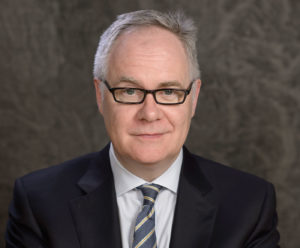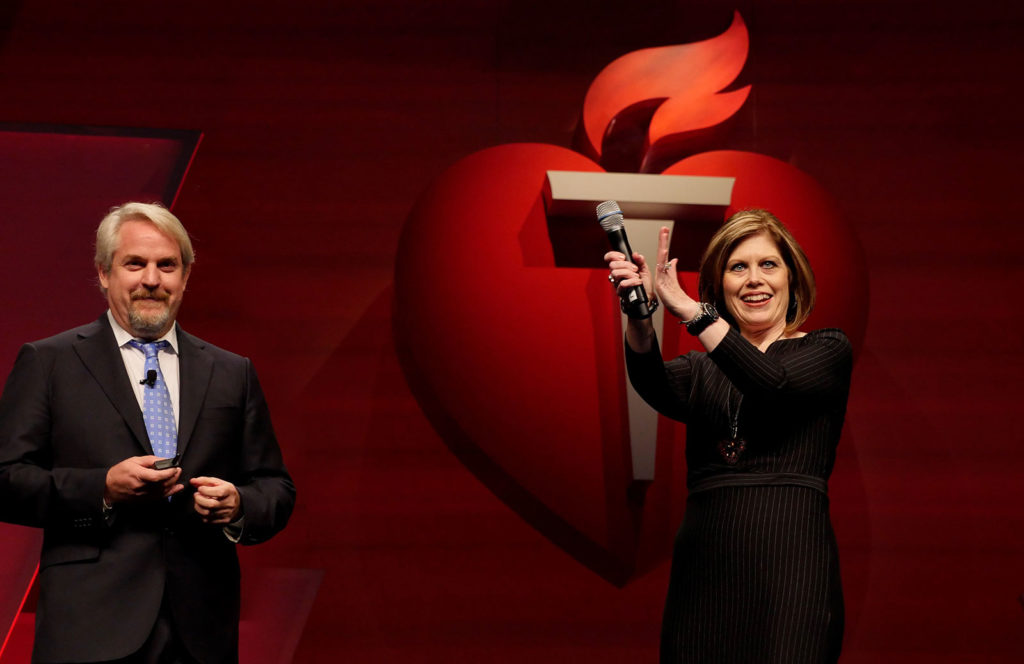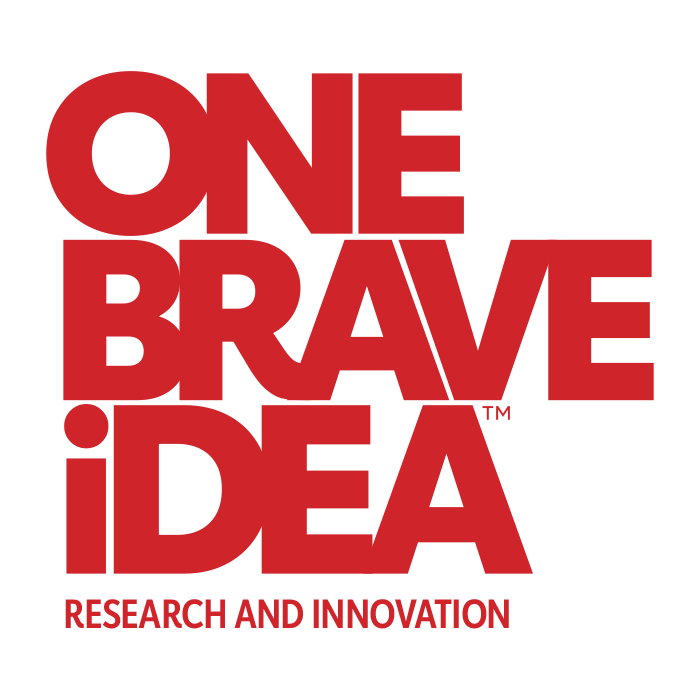AMERICAN HEART ASSOCIATION NEWS
CALUM MACRAE RECEIVES $75 MILLION TO PURSUE ‘ONE BRAVE IDEA’ TO BEAT CORONARY HEART DISEASE
AMERICAN HEART ASSOCIATION NEWS – OCTOBER 5, 2016

After 25 years of conducting scientific research and treating patients, Dr. Calum MacRae was frustrated with the industry’s typical way of studying diseases. So he started formulating a radically different approach.
He envisioned adding to the mix a wide variety of new factors, such as the shape of a person’s face and the quality of air they breathe. He’d then sift through all the data to find the hallmarks that indicate someone is likely to develop a disease long before traditional problems manifest – an early-warning system, of sorts, and a way to identify the first stages of a disease.
Now he’s getting $75 million to see if his plan works. And he’ll test it on one of the leading causes of death in the world: coronary heart disease.
MacRae’s bold vision will be the basis of “One Brave Idea,” a five-year research project funded by $25 million each from the American Heart Association, Verily (formerly Google Life Sciences) and pharmaceutical company AstraZeneca. His selection to lead the research was announced Wednesday.
“Dr. MacRae fully embraced our aim of finding a new solution to an old problem,” said Nancy Brown, chief executive of the AHA. “We believe that he and his team are on their way to unraveling some of the mysteries behind this disease, which could put all of medical science on the road to treating, preventing and ultimately beating coronary heart disease.”
One Brave Idea sprung from a conversation Brown had in 2015 with Dr. Andy Conrad, CEO of Verily, about the way science was battling cardiovascular diseases, the No. 1 killer in the world, claiming almost 18 million lives worldwide.
The pair felt that research had become too incremental, done by teams that were too narrow and lacked the powerhouse funding to bring together the best and brightest minds. They also considered the application process far too cumbersome.
So they decided to flip the entire script.
They agreed to launch a project built around a single potentially game-changing idea, with the leader required to assemble a team with the breadth of specialties and caliber of skills to see it through. The project would target coronary heart disease – the buildup of plaque in the heart’s arteries that can lead to heart attacks – because at 7 million lives it claims the largest chunk of the death toll from cardiovascular diseases.
To show how serious they were, Brown and Conrad took two more significant steps.
First was the money they put behind it: $50 million when announced last November, upped to $75 million when AstraZeneca joined. The AHA’s $25 million is the biggest single research investment in the organization’s 92-year history.
Second was the streamlined application process. It asked only a few basic, concise questions, such as “What is your idea?” and “Why is this different?” Each answer was limited to 250 words. By comparison, MacRae recently drafted a 498-page application for another, smaller grant.

When the competition kicked off, Conrad half-jokingly said the winner “could be a teenager in Wisconsin who has a brilliant idea.” MacRae is a more mainstream choice. He’s chief of Cardiovascular Medicine at Brigham and Women’s Hospital in Boston, one of the core training hospitals for Harvard Medical School, where he is also an associate professor.
A key component of all applications was the caliber of team that would see the idea through. MacRae’s squad includes center directors from the Massachusetts Institute of Technology, Stanford University, Northeastern University and the University of Toronto; two leaders of the federal Million Veteran Program; and the principal investigator of the Framingham Heart Study. Each person represents a critical specialty, as does the remaining member: a venture capitalist.
“This is innovative in multiple ways,” MacRae told American Heart Association News during an interview at his Boston office. “It’s a very dramatic and a frame-shifting approach to changing the game. And I love that.”
MacRae was among 349 applicants from 22 countries. A panel of leaders from the three funding organizations narrowed the pool to 26 candidates and asked them to provide more details. From there, 10 finalists were invited to make a one-hour presentation at Verily’s headquarters in San Francisco.
Eight finalists presented fascinating ways to target specific aspects of coronary heart disease, while MacRae was among two finalists who offered mold-breaking approaches, said Dr. Robert Harrington, a selection committee member who is also chair of the Department of Medicine at the Stanford University School of Medicine and an AHA board member.
Since breaking the mold was the genesis of this project, and because MacRae’s approach seemed so promising, he received this coveted prize.
“His team really seemed to grasp the notion that in order to make progress against this disease we had to do more than the same old, same old,” Harrington said. “By talking, for example, about bringing in environmental data through geospatial mapping or bringing in environmental, social and cultural data through things like social networking, he was giving us a non-traditional view of science.”
MacRae, 54, is a native of Scotland who came to Boston in 1991 for a fellowship at Harvard Medical School in the pioneering cardiovascular genetics lab of Jon and Christine Seidman. He went to Massachusetts General Hospital in 1996, lured in part by the opportunity to work in the developmental biology lab of Mark Fishman. He remained there until 2009, when he returned to Brigham and Women’s. He rose to chief of cardiovascular medicine in 2014. He’s best known among peers for research in human genetics and zebrafish, an animal with genetics similar to humans. His two biggest previous research grants were each for around $18 million, both involving zebrafish.
A few years ago, MacRae was studying a disorder characterized by skin problems on palms and soles as well as arrhythmias (irregular heartbeats) in the heart’s right ventricle when he asked himself a question: What if the roots of coronary disease aren’t in the heart?
That question, along with his boundary-breaking research team, are at the core of One Brave Idea.
MacRae is not sure what he’ll find, but one of his favorite aspects of One Brave Idea is that he’s empowered to figure it out along the way.
Just to be clear, MacRae has plenty of ideas about where to look – about 50 different first experiments, including the density of certain bones, the skin on a patient’s knuckles and environmental exposures (toxins and pollens) based on where they live.
It’s just that, unlike traditional research projects that require detailed road maps to even secure funding, One Brave Idea will begin with his team hammering out their initial areas of exploration, unafraid to test things that might fail. His teammates are also building lists of areas to explore, with all suggestions going into a master file. It will then be whittled down to, essentially, a Top 10 list based on performance.
How will they decide what makes the cut? They’ll get close on their own, then refine it further by tapping into another of MacRae’s favorite aspects of One Brave Idea.
“We can use Google’s amazing informatics capabilities, AstraZenca’s proprietary data and we can ask questions across AHA networks,” he said.
The initial study group will include people who don’t have coronary heart disease but are at the highest risk because a relative has it.
Half of such a group is likely to have the disease lurking in their genes and half won’t. The challenge is whether MacRae’s system can figure that out before the disease reveals itself.
“We want to understand what the very earliest forms of coronary disease are, what is different about the people that end up having plaque buildup from those who don’t,” MacRae said.
As the study progresses, the Top 10 list is likely to change. It’s also likely to be expanded.
Study groups also eventually will be broadened, testing people in the general population. In building each pool of candidates, access to the Million Veteran Program and Framingham Heart Study will be especially valuable.
The Million Veteran Program allows vets in the Veteran Administration Healthcare System to OK that their blood and health information be used anonymously in research studies. Framingham is the nation’s longest-running heart study. Launched in 1948, it still follows cardiovascular development in three generations of participants.
MacRae also values input from the patients and their families. He noted that relatives can often tell when a member of a younger generation seems likely to develop the same condition as, say, a grandparent. Perhaps this research can quantify that sixth sense.
If all goes as hoped, One Brave Idea will produce a way to detect coronary disease decades before symptoms arise. That would unlock a world of opportunities – insights into mechanisms, new treatments and therapies that could prevent patients from making the leap from disease-carrier to disease-sufferer.
In parallel, MacRae and his team, with the advice of the venture capitalist, will seek more funding so scientists can continue down the most promising paths toward a cure for coronary heart disease. The other objective of One Brave Idea is upending the ways in which medical research is funded and organized.
If MacRae’s method works, One Brave Idea could become the new paradigm for studying many diseases.
“Traditional biomedical research has done a lot for us, but can only do so much more,” MacRae said. “Instead of continuing to seek an incremental biological approach, we’re being eclectic. It’s almost like crowdsourcing in many different crowds. It’s time to begin using the remarkable advances in all of society to try a more holistic approach to solving our disease problems.”
BY: AMERICAN HEART ASSOCIATION NEWS – OCTOBER 5, 2016
